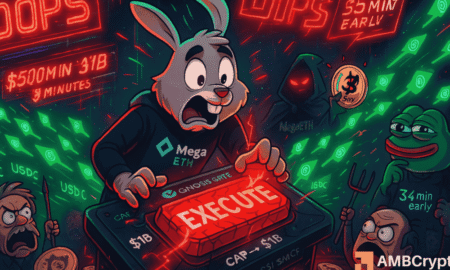Klarna’s USD Stablecoin: A Bold Step into Digital Currency
Klarna, the Swedish fintech giant best known for its buy-now-pay-later (BNPL) services, is making headlines with its upcoming launch of a U.S. dollar-backed stablecoin named Klarna USD. Announced on November 25, this move represents a significant shift in the digital payments landscape, positioning Klarna as a strong competitor in the realm of digital money. With over 150 million global users, Klarna plans to integrate this new stablecoin directly into its payment ecosystem, harnessing the immense popularity of USD-denominated stablecoins, which dominate with over $200 billion in circulation.
Why the Focus on USD?
One of the most striking aspects of Klarna’s stablecoin launch is its decision to base the currency on the U.S. dollar rather than the euro. This choice raises critical questions about Europe’s position in the digital finance arena. The European Central Bank recently indicated that euro-based stablecoins account for only €395 million in circulation, a stark contrast to the widespread adoption of USD tokens. Klarna’s move to issue a stablecoin that aligns with a more favorable market reality reflects the global trend of utilizing U.S.-denominated assets, raising concerns about whether European regulations are inadvertently restricting innovation.
Klarna’s launch also comes at a pivotal time, as it prepares for a potential IPO, seeking to strengthen its appeal to investors by showcasing a diversification of services. The integration of a stablecoin could differentiate Klarna from traditional financial services and BNPL offerings, signaling its evolution into the digital currency space.
Competitive Landscape: The Rise of Stablecoins
Klarna is not entering this space alone; the competition among fintech companies to capitalize on the potential of stablecoins is intensifying. Companies like Revolut are exploring similar initiatives, while established payment giants such as PayPal have already launched their own stablecoins, including PayPal’s PYUSD. The competitive landscape presents both challenges and opportunities for Klarna, especially as it aims to carve out its niche in a sector crowded with both traditional and crypto-native players.
While PayPal’s PYUSD has achieved some adoption, questions linger regarding consumer demand and acceptance among merchants. Klarna faces the dual challenge of driving user adoption while navigating a landscape that includes numerous established players looking to capture the same market share.
Skepticism Around Adoption
Despite the push for innovation, skepticism remains regarding whether users are genuinely interested in a Klarna-branded stablecoin for everyday transactions. Critics argue that Klarna’s focus may be less on meeting consumer needs and more on yield generation opportunities within the fintech sector. Recent commentary from industry observers highlights concerns that Klarna will struggle to convert its existing BNPL customer base into stablecoin users, with many of them having initially signed up for installment payments, not for a cryptocurrency experience.
Moreover, the broader implications for the cryptocurrency community must also be considered. Some analysts suggest that the focus should remain on building robust blockchain infrastructures for diverse applications, rather than catering solely to fintech enterprises, which could sideline retail users and token traders.
Regulatory Environment and Its Impact
The regulatory framework surrounding cryptocurrencies, particularly on the European side, adds another layer of complexity. The EU’s Markets in Crypto-Assets (MiCA) regulation imposes stringent requirements on stablecoin issuers, which some argue disproportionately favors established USD-based players. This regulatory dynamic raises questions about whether Europe can maintain a competitive edge in the rapidly evolving digital finance market. If European fintechs like Klarna continue to gravitate toward USD-based innovations, this could signal a shift in the continent’s economic landscape and influence policy discussions around the regulation of digital currencies.
Conclusion: Will Klarna’s Stablecoin Find Its Market?
The success of Klarna USD will ultimately depend on its acceptance by shoppers, merchants, and regulators alike. While Klarna boasts a formidable user base and merchant network, transforming BNPL customers into stablecoin holders requires more than just technical capabilities. It necessitates a comprehensive strategy for user education, incentivizing adoption, and demonstrating clear benefits for everyday transactions.
As the fintech sector continues to evolve, Klarna’s venture into stablecoins could either become a landmark moment in digital finance or an experiment that fails to gain traction. Observers remain cautiously optimistic, hopeful that Klarna’s innovation will resonate with consumers who are increasingly searching for alternative payment solutions in a competitive marketplace.
















